Kanban: Definition, 6 Rules, and its Benefits
Kanban is a crucial part of the Just in Time (JIT) system, which we discussed…
Sean Thobias
May 17, 2025You’re no longer just thinking about starting a retail store – you’re now a business owner/manager, satisfying customers and making profits. After opening your retail business, there are two options: enjoy its rewards or selling your business to prospective buyers.
In this final chapter of our retail guide, we’ll guide you through the steps to enjoy your labors and explain what to do if you decide to sell your business.
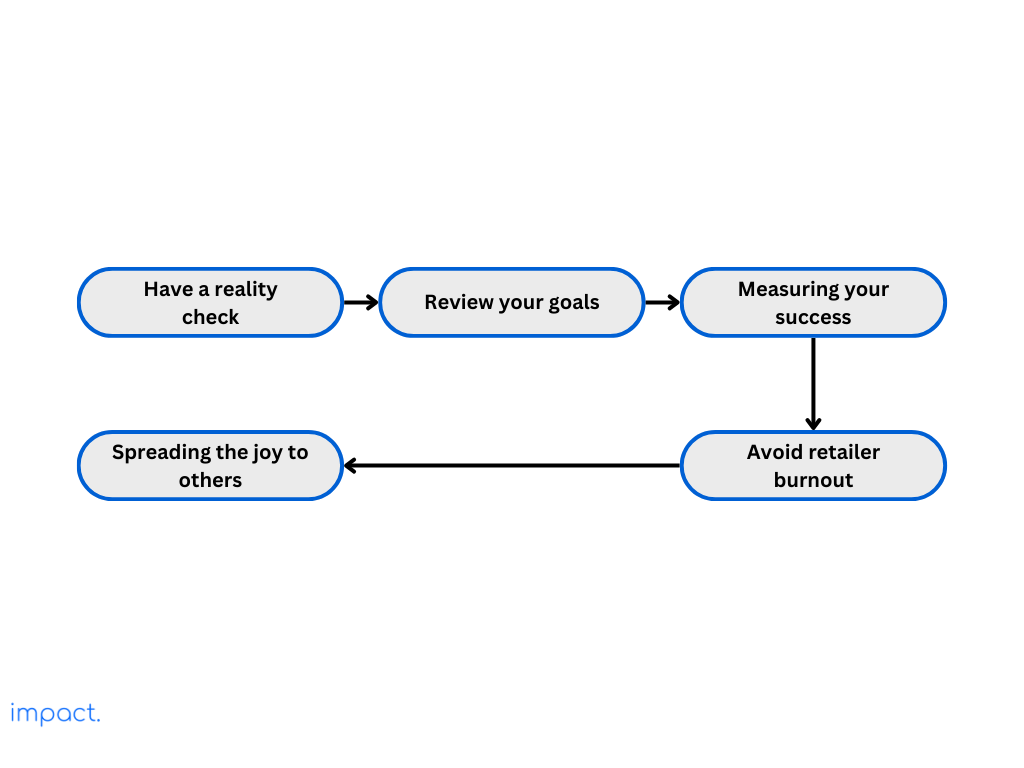
Take a hard look at your retail store. It’s not just a shop; it’s a hub for the community, a source of income for your staff, and a money-making venture for you.
Now, let’s talk issues. Scrutinize your finances, customer happiness, and overall performance. Find the weak spots and celebrate the wins. Be honest about what’s working and what needs fixing.
Regularly pause to assess your overall business strategy, helping your mindset and managerial effectiveness. Confirm that your day-to-day decisions align with your long-term vision, adjusting goals based on market trends and customer preferences to stay on track.
There are many ways in which you can review your business goals. Here are some of those examples:
Read more: Retail Business Planning from Concept to Profit
As your retail store expands and marks anniversaries, you might ask yourself if it’s successful. Determining success isn’t straightforward, as various ways exist to measure it.
Starting a retail store boils down to making money for yourself. It’s about earning a living, fulfilling a job, and aiming to create value that you can eventually turn into cash.
The profits are personal and tangible — a salary that covers your basic needs and supports your store’s essentials like inventory, overhead, and taxes. Additionally, you want to grow your business assets, including stock, fixtures, goodwill, and a financial safety net.
Customer success is delivering what customers want, and improving their lives through your store’s daily operation. Unlike personal profits, measuring this success is trickier.
Measure it by staying connected with customers, gathering their opinions on how the store benefits them, and quantifying results by examining sales levels. For instance, if one in six customers expresses appreciation, and your store serves sixty customers daily, at least ten customers benefit — this is customer success.
Some retailers are proud of what they provide for their employees. With enough money and good management, retailers can hire the best local workers who understand the value of providing real service.
Certain retailers see affordable health care and a safe workplace as crucial to their business success. Either way, measuring retail success includes offering employees better working and living conditions than big-box stores.
Starting and running a successful retail store in your community has several positive impacts. Your store provides an excellent customer shopping destination and a top-notch workplace for employees.
Beyond that, it contributes to the community by paying taxes, improving the local business scene, donating to local charities when feasible, and boosting local pride through its helpful and successful presence.
Burnout happens when work leaves you feeling drained, cynical, and emotionally detached due to a lack of impact or control. In September 2022, Microsoft’s Work Trend Index found that over half of managers (53%) admitted experiencing burnout on the job.
To avoid burnout, start by recognizing the signs and take action early. One crucial step is to take breaks regularly. Also, delegate tasks when you can, and seek support from your team to lighten the load.
Ensure that the joy you experience in your retail business is spread to others. Make it a point to involve your customers and employees in creating and enjoying a positive and enjoyable atmosphere in your store.
Create an enjoyable shopping experience in your store by organizing it for efficiency and offering valuable inventory that caters to your customers’ needs.
In the face of tough competition from big-box stores, go beyond mere efficiency and value. Differentiate your store by making it friendly and helpful, traits often lacking in larger retail establishments. Here are some suggestions to achieve that:
An enjoyable workplace improves the work environment benefits current employees, and builds a pool of potential hires. Now, here are some ways to enhance your store’s environment for your employees:
Every retailer will reach a point where they consider selling their store, driven by various reasons. The timeline for selling varies widely – some stores change hands within a year of opening, others endure for generations before hitting the market.
Let’s look into the compelling reasons behind retailers deciding to sell:
Starting a retail store is initially exciting, but the thrill can wear off. Entrepreneurs either open more stores or look for new challenges.
People have different preferences; some like the excitement of launching a business, while others prefer day-to-day management. Recognizing these distinctions, some entrepreneurs focus on startups, while others excel in daily operations by leveraging their strengths and collaborating.
External factors beyond your control may hinder your retail store’s growth. If your sales aren’t increasing as expected, your store might be healthy but stunted.
If your store isn’t growing despite your best efforts, it might be time to sell. You’ve worked hard; now someone else could take on the challenges. Even if it doesn’t fetch top dollar in a fast-paced market, your store still has value as long as there’s potential.
If your goal was to sell your store after building up its value, check the financial health of your business. If it’s in good shape, search for prospective buyers willing to exchange their cash for your fixed assets.
Equity can convert into cash, exchange for assets like property or equipment, or generate a steady income.
Imagine a deal that not only meets but surpasses your financial expectations — a buyout that brings substantial profit or terms that make selling your business a smart financial move.
Every retailer hopes for that perfect moment when a prospective buyer comes in with an unbeatable deal, whether a customer, a retiring executive, or a lucky lottery winner. When faced with such an offer, some might decline if they still enjoy managing the store, while others may take a few days to weigh their options.
Selling your business is like selling your products: it’s about having the right mix, setting the correct prices, and making it easy for customers to purchase. Unlike fixed-price merchandise, determining your store’s value requires a different approach.
To get an idea of your retail store’s worth, consider these factors:
Assessing a retail business’s value is crucial — it’s like thoroughly examining its financial well-being, performance, and future potential.
Different methods come into play to determine a fair and accurate business value, such as annual gross sales, annual net sales, and the balance sheet. This evaluation considers historical financial data, growth possibilities, market conditions, and the competitive environment.
In an entity sale, the buyer takes over the whole daily operations, from business assets and contracts to debts and legal matters. The price is usually determined by the total enterprise value (TEV), considering tangible and intangible assets and outstanding debts.
Once the purchase is complete, the buyer takes over normal business operations, and the purchase price reflects their perception of the ongoing business value.
In an asset sale, the prospective buyer picks and buys particular things from the retail business, like inventory, equipment, customer lists, and intellectual property. The fair market value of each business asset determines the value of this type of sale.
This way, buyers can choose what they want without taking on unwanted debts or responsibilities. Asset sales can affect the overall value compared to a sale where the entire business entity is transferred.
A GOOB sale happens when a store is shutting down, selling everything. In these sales, prices are usually lower because they’re based on the urgent need to get rid of everything, not the usual market value.
Buyers in a GOOB sale are after cheap deals on inventory and assets, taking advantage of the seller’s rush to sell everything quickly.
Once you’ve decided to sell your store, determine the business value, and choose between equity or asset sale, it’s time to search for potential buyers.
There are four primary sources of store buyers:
Let’s dive into each one and discuss practical methods for approaching them.
Many customers may dream of owning a store like yours, especially if it’s successful and unique. The challenge is finding a way to share your business without jeopardizing your existing customer base; here’s how:
Consider contacting your primary suppliers, as they could help you find a prospective buyer for your store. They might be in search of retail outlets or have connections with business owners of similar stores who are open to expanding, swapping, or buying extensive inventories.
To discuss your store with a supplier, contact your sales representative. If you don’t have one, contact the supplier directly and ask to speak with the sales or marketing manager or an executive for clear communication about your intentions.
Most small retailers eventually develop good relationships with their competitors, even those who own local franchises. These contacts may turn into prospects for selling your store, as they may want to expand one day.
When thinking about selling your business to a competitor, it’s essential to approach the conversation cautiously. Start with a casual inquiry, set up a verbal confidentiality agreement, and, if needed, enlist a business broker for communication with competitors.
To sell your retail store effectively, broaden your buyer search. Look for entrepreneurs prioritizing a thriving business rather than a specific retail niche.
Utilize a business broker or online advertising to increase your outreach and enhance the chances of finding the right prospective buyer for your profitable store.
In wrapping up our retail business guide, we’ve covered everything you need to know about starting and running a retail business, from the initial idea to being a successful business owner focused on customer satisfaction and profits. As we finish, take a moment to appreciate the rewards of your hard work in the retail world.
However, entrepreneurship is ever-changing. An exit strategy may bring new opportunities if joy fades in your retail venture. Whether relishing success or seeking a new path, may your retail journey stay fulfilling.
Ramsey, D., & Ramsey, J. (2010). The Everything Guide to starting and running a retail store: All you need to get started and succeed in your own retail adventure. Adams Media.
Impact Insight Team
Impact Insights Team is a group of professionals comprising individuals with expertise and experience in various aspects of business. Together, we are committed to providing in-depth insights and valuable understanding on a variety of business-related topics & industry trends to help companies achieve their goals.
See how our software provides better value.
Speak with our consultant to explore how we can improve your accounting, processes, and people.

Now that your retail store is running let’s focus on business growth. Growing a business comes in various forms, and there’s no one-size-fits-all solution.
To grow your retail business, consider the following strategies outlined in Dan Ramsey’s book, “The Everything Guide to Starting and Running a Retail Store“:
In this part of our retail guide, we’ll discuss signs indicating it’s time to expand your business and the three retail growth strategies to make it happen.
If your retail store is consistently crowded and customers complain about long wait times or items being out of stock, it may be time to expand your business. The constant crowd and complaints mean you’re hitting capacity, and expanding will help you meet the demand.
If your profits have been steadily increasing, it’s a strong indicator that your business is thriving. This financial stability suggests you have the resources to support and sustain retail growth.
Satisfied and loyal customers often come back, indicating a healthy business. If a big part of your sales is from repeat customers, it’s a sign to consider expanding to keep up with the increasing demand.
If your day-to-day business operations are smooth and your systems are working well, you’re in an excellent position to grow. Efficient operations are a sign that your business can handle the challenges of expanding.
Evaluate your competitors closely. If you’re consistently doing better or at least holding your own against them, that’s a green light to consider growing your business and securing your spot in the market.
Your employees are the face of your business, and their feedback is crucial. If they’re facing challenges in meeting customer needs or have ideas for improvement, it’s a clear signal that your business needs to expand to ensure better service for both customers and employees.
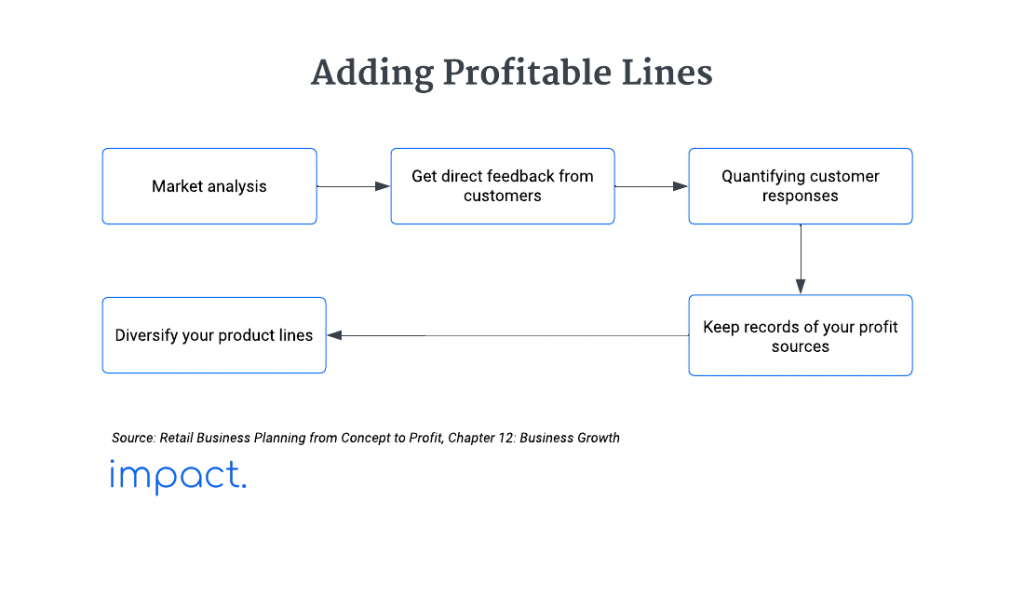
Understanding your market is crucial for business success. Instead of getting overwhelmed by complex analysis, focus on discovering your customers’ wants. Utilize simple statistics to make informed decisions and enhance your retail strategy.
Conducting a fundamental market analysis for your retail business can be simple and practical. Here’s how:
To know what your customers want, ask them or observe their behavior. Collect transaction data from day one, noting what they buy, when, and the payment methods used.
Additionally, track store traffic details, such as the number of visitors, their initial department visits, and how long they spend there – all of which provide valuable insights.
If you’ve casually talked to customers about their habits, it might be hard to measure the results. To fix this, use clear and measurable questions by standardizing your approach using surveys.
For example:
Instead of using a subjective question like, “What do you generally like about our product?” try asking, “How satisfied are you with our product on a scale of 1 to 10?” You’ll get a more specific and measurable response.
To get better results, talk to more customers. Spread your surveys throughout the day and week to get a well-rounded view of your customer base. Surveys provide valuable data that your retail store can use to add profitable product lines.
Maintaining records for your retail store might feel like a hassle, but it’s crucial. Even though it costs time and money, the payoff comes when you need to understand where your store’s profits are coming from.
Look at which products don’t bring in much profit or sell at a loss. If space is limited, prioritize the more profitable items over the less profitable ones. Allocate your resources strategically, focusing on the most critical lines to your bottom line.
Focus your independent retail store on a core product, but as your business expands, consider adding new components or complementary items for increased profitability. This strategy is known as diversification.
You can diversify your product line by doing the following:
When expanding your product range, understand your customers and their desired products. Identify trustworthy wholesalers, try out the products, and closely monitor sales to make sure they bring in profits.
Nowadays, many retail businesses create online stores alongside their physical ones. This move can boost profits by attracting more customers and generating additional sales.
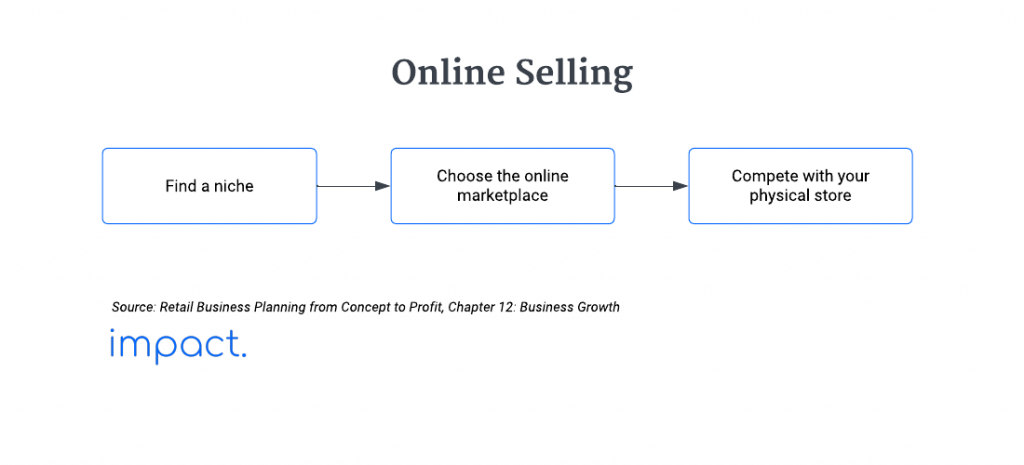
Creating an online store is like setting up a brick-and-mortar shop, with the key distinctions being your customer base and how you cater to them.
Start by pinpointing a target market for your products based on your skills, interests, and what customers might need. Investigate competitors in that niche to grasp the market demand and identify any opportunities.
Choose to sell only on your website or popular marketplaces like Amazon, Tokopedia, and Shopee. Compare fees, rules, and target audiences to pick the best platform for your products.
Ensure your product listings on these platforms are well-optimized with the right keywords and images. Utilizing multiple platforms helps you reach more customers and expand your sales channels effectively.
After launching your online store, it’s crucial to balance it with your brick-and-mortar presence and stay competitive effectively. To make this work seamlessly, try these practical tips to harmonize your online and physical stores:
Also read: Retail Promotions: Key Benefits and its 5 Steps for Success
Check if your organized store is reaching its full potential before making big changes. Look for signs showing your customers are ready for a larger retail store.
If you want to expand your retail store, you have choices. You can shrink the back room, relocate it, add a mezzanine, or take over a nearby space. Alternatively, you can move to a larger store or open a second one.
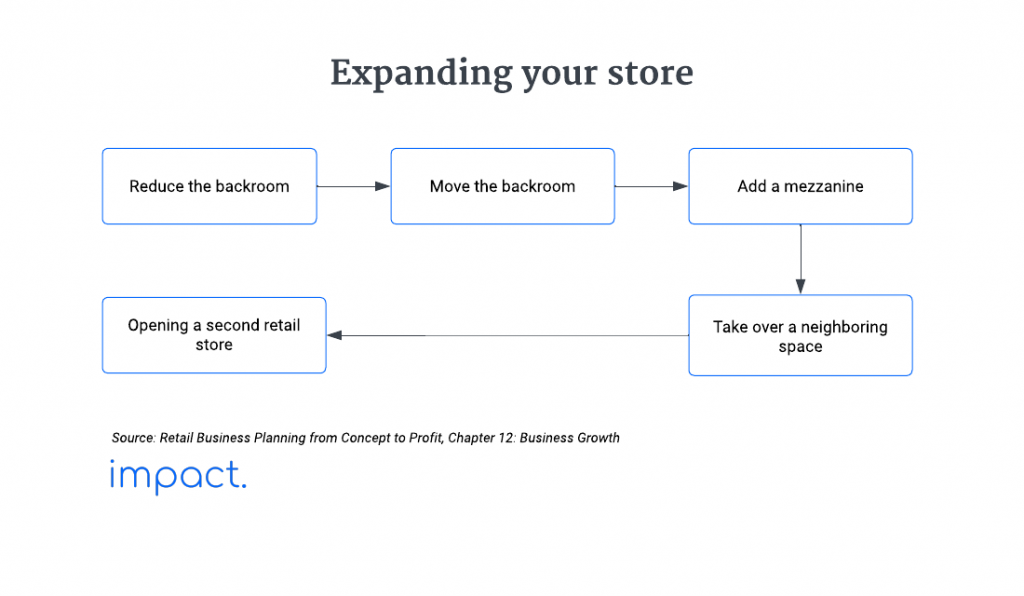
To make more space in your store, shrink the back room. As your store grows, move everything you need to the sales floor, leaving the back room less crowded or cluttered.
Focus on ways to make the back room more diminutive and more efficient. Here are some ideas:
Consider skipping the backroom in your retail store altogether. Look for nearby spaces in your mall or retail center for storage and shipping.
If that’s not an option, find a secure storage unit nearby or rent a portable one near the back door for extra stock.
A mezzanine is a middle floor between two main floors or between the main floor and a high ceiling. Alternatively, it can be a low platform with stairs, creating extra sales space with storage below.
The advantage of a low mezzanine is that it’s visible from anywhere in your store. If you’re interested, hire a retail architect to design one. Ensure you obtain the necessary permissions and a long-term lease from your landlord.
Around 20% of small businesses don’t make it past their first year, which climbs to 30% by the second year’s end, as the Bureau of Labor Statistics reports.
Consider seizing the chance to grow your store — maybe by knocking down a wall or adding a doorway to a nearby store. While the right conditions and timing are crucial, getting to know your neighbors can prepare you to expand without relocating.
Opening a second retail store can bring advantages but can also be costly, especially if you have to divide your focus between the two. Here are some things to think about as you consider opening another store:
Also read: Retail Success: Enjoying Rewards and Selling Your Business
As your retail business grows, watch for signs indicating it’s time to expand. Whether adding new products, going online, or opening more retail stores, each decision comes with its challenges and rewards.
Successful retailers use technology such as an ERP system to automate tasks and streamline processes to handle the increased workload of business growth. In the next chapter of our retail guide, we’ll discuss ways to enjoy your business and explore the following steps, including selling it.
Ramsey, D., & Ramsey, J. (2010). The Everything Guide to starting and running a retail store: All you need to get started and succeed in your own retail adventure. Adams Media.
Impact Insight Team
Impact Insights Team is a group of professionals comprising individuals with expertise and experience in various aspects of business. Together, we are committed to providing in-depth insights and valuable understanding on a variety of business-related topics & industry trends to help companies achieve their goals.
See how our software provides better value.
Speak with our consultant to explore how we can improve your accounting, processes, and people.

The previous chapter explored how advertising brings customers to your store. Now, let’s dive into retail promotion, which, as Dan Ramsey explains in “The Everything Guide to Starting and Running a Retail Store,” includes all paid or free efforts to get customers to act.
This guide will show you how to run a successful retail promotion, outline various strategies, and provide best practices for effective retail promotion.
Advertising and promotion are terms often used interchangeably, but advertising is just one part of promotion.
Promotions are like short ads, offering consumers incentives like free products, coupons, discounts, or risk-free trials. By providing reasons to shop with you, customers are more likely to act impulsively and sign up for your offerings.
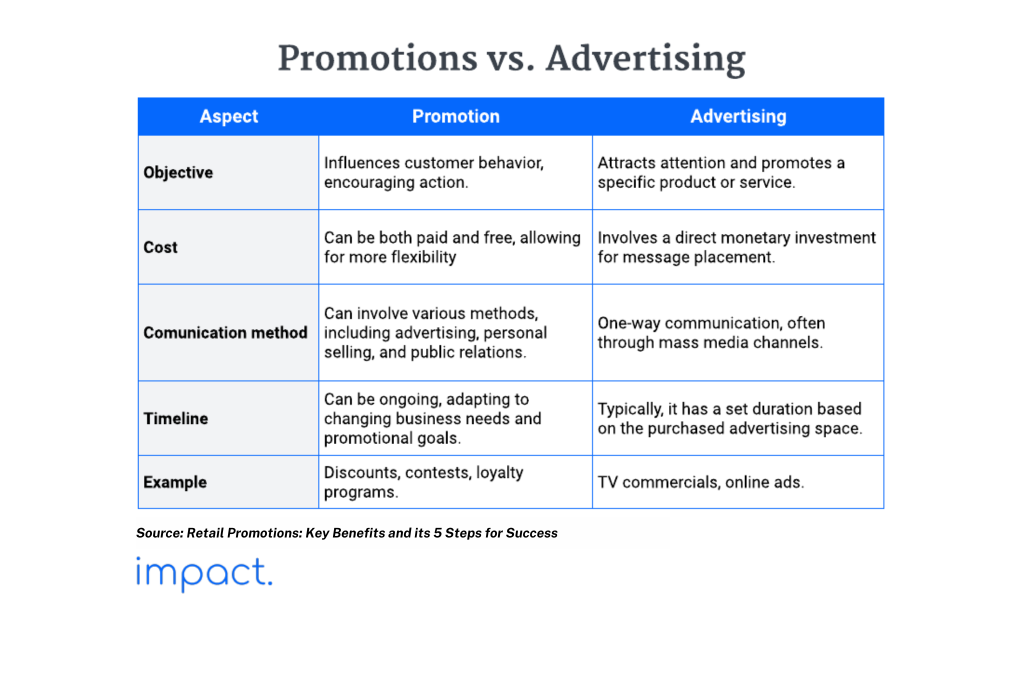
Retail promotions bring in more customers and boost immediate sales, increasing conversion rates and average transaction values. A survey shows that 93% of U.S. shoppers consider discounts and offers crucial in buying from a retailer or brand.
Use promotions to encourage customers to buy more or try different products. For example, a buy-one-get-one (BOGO) offer can inspire customers to add extra items to their cart. Additionally, promotions attract new customers who might have hesitated to try your products or services at the regular price.
When you have products that aren’t selling well or have too much stock, retail promotions are a quick way to get those items off the shelves. It is beneficial for seasonal items like holiday decorations or summer clothes, which may not sell as well after a specific time.
Using promotions to offer discounts or bundles on seasonal products helps generate interest and boost sales during specific seasons or events. This approach allows retailers to make the most of their sales opportunities while reducing the chances of having leftover unsold inventory.
Effective retail promotions build customer loyalty. When you consistently offer value through promotions, customers feel appreciated and become loyal.
When customers feel valued and rewarded, they stick with your brand. This loyalty leads to repeat purchases, providing steady revenue and reducing the need to attract new customers constantly.
Promotions reflect our love for good deals and the fear of missing out. Impulse buys happen when people are drawn to a fantastic deal or worry about losing out on a limited-time offer.
Retailers can capitalize on these impulsive tendencies by making promotions feel scarce or exclusive.
Retail promotions offer a chance to gather important customer data. Customers who engage with promotions might join loyalty programs, subscribe to newsletters, or share information while purchasing.
Utilizing this information allows for refining target audience segmentation, crafting personalized promotions, and enhancing the effectiveness of future marketing strategies.
Discounts involve temporarily reducing the regular price of a product or service, either by a fixed amount or a percentage of the original price.
When deciding on discounts, consider whether they should apply to the entire store or specific products. While a storewide discount attracts attention, choose the option that aligns with your business strategy.
Pros:
Cons:
BOGO promotions mean you get a free or discounted item when you buy a specific item at the total price. Customers love these deals because they make spending money feel less guilty, giving them a sense of getting more for their bucks.
Highlight your BOGO offers prominently to ensure customers are aware of the offer. Verify that your stock can accommodate increased sales and simplify the retail promotion for easy customer participation.
Pros:
Cons:
Coupons are vouchers or codes that give discounts when used for purchases. They can be given out in print, digital, or mobile apps and be single-use or reusable.
Consider sending virtual coupons to first-time or big-spending customers. A coupon in their inbox makes customers feel special and prompts them to return to your store.
Pros:
Cons:
A loyalty program is a way businesses encourage customers to return by giving them rewards. These rewards can be things like discounts, points, or special perks.
To start a retail loyalty program, make a straightforward points system. Encourage people to join, provide personalized deals, keep them informed about their points, and improve the experience with technology such as mobile apps or digital cards.
Pros:
Cons:
Businesses create seasonal retail offers as special deals for holidays or events, aligning with when people usually desire specific products.
To implement these offers effectively, companies adjust their marketing strategies to match the season, create deals relevant to that time, modify product displays, use seasonal images, and promote the offers in various ways.
Pros:
Cons:
Bundle promotion involves combining various products or services and selling them together at a discounted price. The idea is to encourage customers to purchase multiple items, making them feel they’re getting a great deal and spending more while also helping the store sell specific inventory.
To implement a successful bundle promotion, the store should carefully select complementary products, create appealing package deals, highlight the cost savings to customers, and set prices that make the bundle more enticing than buying items individually.
Pros:
Cons:
In a retail store, collaboration and partnership promotion means teaming up with other businesses to create marketing strategies that benefit everyone involved. It includes working together to promote products, share customer bases, and use each other’s strengths to boost visibility and sales.
To implement this, a retail store can forge alliances with businesses that complement its offerings. It might involve co-hosting events, promoting each other’s products, or giving discounts to customers who support both businesses.
Pros:
Cons:
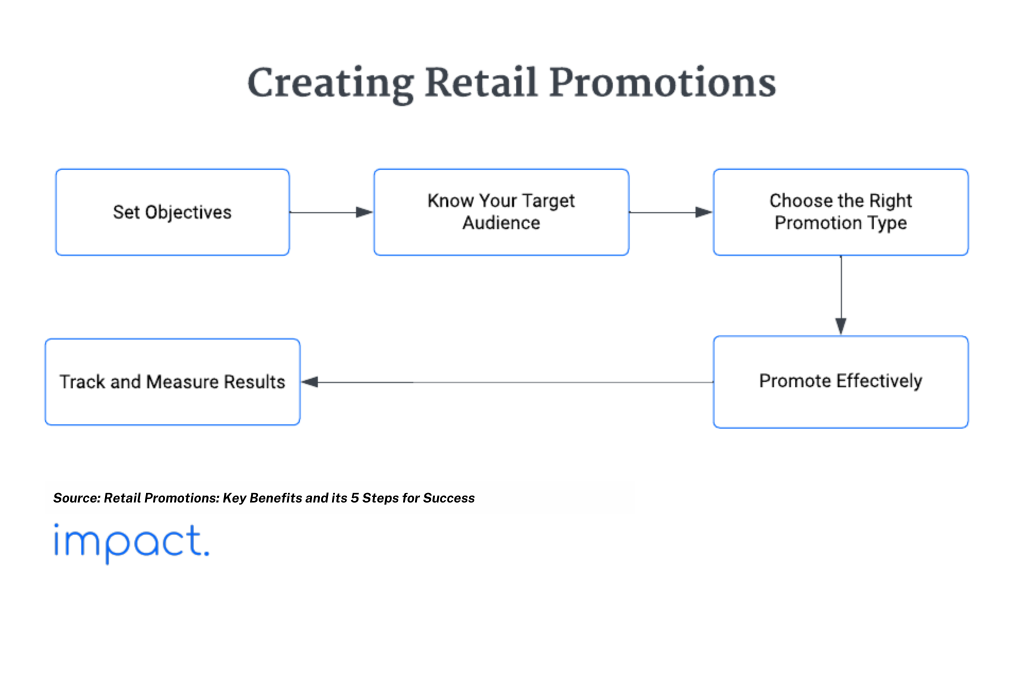
State the goal of your promotion upfront. Here are some common objectives:
Ensure your retail promotion goals are SMART—specific, measurable, achievable, relevant, and time-bound. For instance, set a particular percentage increase target within a defined time frame to increase your sales.
Customize your retail promotions to suit your target audience, leading to better outcomes. By grasping what your audience likes, you can craft promotions that resonate with them, making it more likely for them to get involved and make purchases.
Examine customer details such as demographics, preferences, and behaviors. Take into account factors like age, gender, income, and location. This understanding enables you to design promotions that align with their interests, increasing their engagement and purchasing chances.
Choosing the right retail promotion depends on your goals and what your target audience likes. Different promotions work for other customers:
Once you’ve decided on the promotion type, use a mix of marketing channels to reach your audience. This could include:
Read more: Unlocking Growth: 19 Traction Channels for Business Success
Set up a system to track important metrics for your goals. Monitor sales, customer engagement, and foot traffic during promotions. Analyze the data to see how well the promotion worked and find ways to improve it.
Get feedback from customers to learn about their experiences and preferences. Use this information to improve your strategies for future promotions and make your marketing strategy more effective.
Complicated promotions can confuse customers and make them less likely to join in. Keep retail promotions simple and easy to understand to boost participation, increasing customers’ chances to remember and act on them.
For instance, simplify sales promotion emails by focusing on the deal, adding a clear call-to-action button, and avoiding unnecessary text. This makes it easy for customers to click through and redeem the promotion.
In the ever-changing world of retail, consumer choices are influenced by many things. If a promotion isn’t working as expected, it’s vital to adapt quickly. Regularly monitor metrics, use A/B tests, and adjust your strategy to avoid wasting time on ineffective marketing and respond promptly to market changes.
Use software and analytics tools to assess your retail promotions’ performance quickly. Measure important factors like sales, customer engagement, and return on investment to determine what’s working and what’s not.
With this data-driven insight, you can make smarter decisions for future promotions, making your marketing strategy more effective.
Don’t stop promoting after customers buy. Besides getting new customers, ensure the ones you already have are happy and want to return.
Map out the customer journey to understand their thoughts, actions, and feelings during buying. Identify areas for improvement, like better customer service, a smoother checkout, or regular communication to keep customer relationships strong.
In the competitive retail landscape, promotions are crucial for success. Integrating a dedicated promotions tool enhances strategies, unlocking more potential and offering valuable insights for better analysis and decision-making.
Use an ERP system to see your inventory, sales, and customer information. This helps you decide on promotions using accurate data, avoiding stockouts or overstock situations. Next, we’ll explore adding profitable lines and expanding your retail store.
Ramsey, D., & Ramsey, J. (2010). The Everything Guide to starting and running a retail store: All you need to get started and succeed in your own retail adventure. Adams Media.
Impact Insight Team
Impact Insights Team is a group of professionals comprising individuals with expertise and experience in various aspects of business. Together, we are committed to providing in-depth insights and valuable understanding on a variety of business-related topics & industry trends to help companies achieve their goals.
See how our software provides better value.
Speak with our consultant to explore how we can improve your accounting, processes, and people.

You’ve got your retail store ready and filled with products — now, let’s focus on bringing in customers. Effective advertising and enticing promotions are crucial to getting people interested and making purchases.
In today’s competitive business world, advertising is a must to stand out. This chapter of our guide emphasizes the significance of retail advertising, offers practical strategies, and explores various channels to help your store market to a broader audience.
The goal of retail advertising is simple: boost sales and revenue. By running effective advertising campaigns, you can attract more people to your physical store or drive more traffic to your online shop.
Advertising is like a spotlight for retail businesses, making them stand out to potential customers. Utilizing different channels, like print, online, social media, and television, helps companies reach a broader audience and showcase what they offer.
Creating and maintaining brand awareness is crucial for retail advertising. A successful advertising campaign consistently communicates a retailer’s values, mission, and personality, distinguishing it from competitors and earning consumer trust.
A robust brand identity boosts customer recognition and loyalty. When your brand is well-known, customers are more inclined to choose your products or services, fostering a positive cycle of consumer preference and business success.
Retail advertising works best when it uses persuasive language, eye-catching visuals, and emotional appeals to grab attention and ignite curiosity and desire for products or services. This approach goes beyond mere information-sharing, forming a genuine emotional bond and fostering real interest in what the business offers.
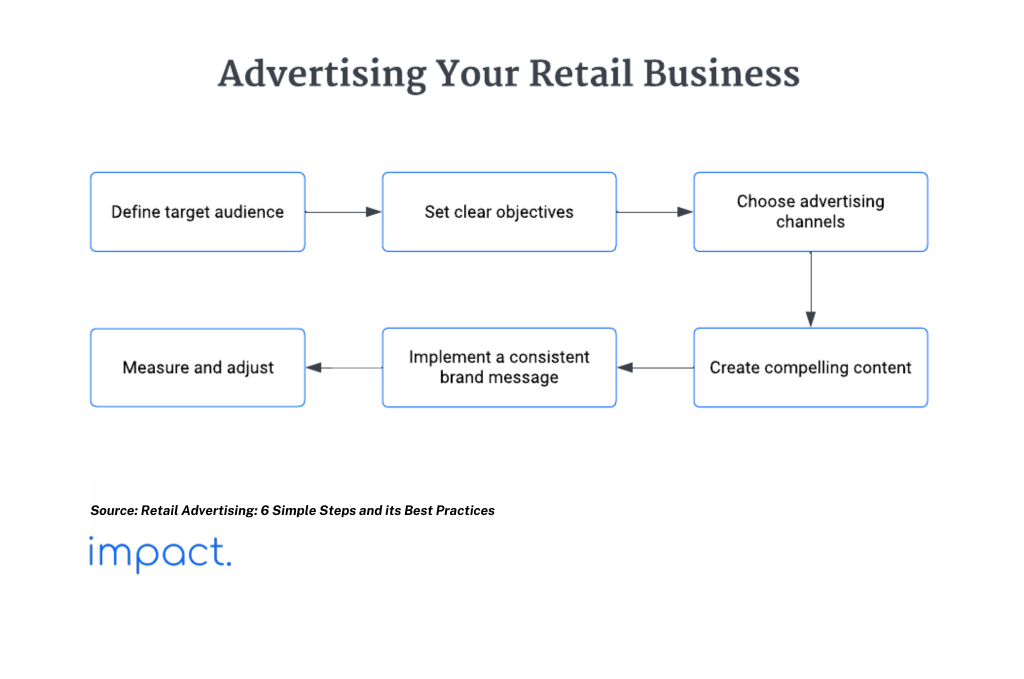
Back in the planning stage of your business, you have already defined your primary customers. Local markets have diverse preferences, so focus on reaching specific groups likely interested in your products or services.
When advertising, tailor your messages to resonate with your core customers, who share common interests, economic status, education level, or geographic location. While your store may attract others, these groups are your primary customer base.
Set specific goals for your ads that match your retail business needs. These goals guide what you say in your retail advertising and help you choose the right platforms to connect with your audience.
Common retail advertising goals include:
For retail businesses like yours, the media landscape is vast, but not all options fit the bill. Stick to local advertising like newspapers, shoppers, radio, and TV.
Since retail advertising costs can add up, choosing the suitable advertising platform wisely can boost your profits.
Newspapers provide local news, features, and advertisements to their readers. You can place display or classified ads in specific newspaper sections.
Contact the newspaper’s advertising department for rates, sizes, and placement details. Create an eye-catching ad with all the essential information, and mention when and where you want it published.
Pros:
Cons:
Shoppers are free community publications delivered to homes, packed with local ads, coupons, and community updates.
Contact the publisher to inquire about ad space and learn how your ads will be distributed. Craft a compelling ad showcasing your promotions and special offers to connect with your customers effectively.
Pros:
Cons:
Radio and TV stations sell advertising slots during specific periods. They broadcast content to their audience, and advertisers can buy airtime for commercials played during breaks.
Contact the sales or advertising team at your local radio or TV station. Talk about when you want your ad to air, who you want to reach, and what you need for production. Craft a catchy audio or video commercial that grabs attention and resonates with your target audience.
Pros:
Cons:
Digital advertising involves promoting your business through online channels. Standard digital advertising methods include social media advertising, search engine marketing (SEM), display ads, email marketing, and influencer partnerships.
Pros:
Cons:
Shift the focus of your advertising efforts from just showcasing products to organizing events promoting your store and attracting new customers. Events, such as sponsored community gatherings, trade shows, product launches, or in-store promotions, create opportunities to connect with the local community.
Pros:
Cons:
Read more: Unlocking Growth: 19 Traction Channels for Business Success
Craft compelling content that highlights what sets your products or services apart, making it crystal clear why customers should choose your store.
Consider these factors:
Consistency is critical for promoting your retail business. Ensure your messages, visuals, and tone match your brand identity across all platforms to build a strong and easily recognizable brand.
Research indicates that maintaining consistent messaging across all channels can increase businesses’ revenue by up to 23%. Conversely, inconsistent messaging may be causing them to miss out on at least this much in potential revenue.
Track your ads’ performance by looking at sales, website visits, and social media interactions. Analyze the outcomes to determine what works and doesn’t, and adjust your strategy accordingly.
Crafting effective advertising strategies has become challenging due to changes in how consumers behave, their preferences, and their shopping habits.
Today’s customers have lofty expectations from retailers. They want a personalized and smooth shopping experience, seamlessly transitioning between online and in-store shopping.
The rise of ad-blocking software poses a significant challenge, with approximately 42.7% of internet users globally employing ad blockers.
Despite the financial drawbacks for publishers and online advertisers, there is a potential silver lining: a renewed focus on content quality that ultimately enhances the user experience.
Cutting through the noise is crucial for successful advertising. The more noise there is, the less effective your ads become. Factors contributing to this saturation include:
Advertising on popular digital platforms has become more expensive, making it challenging for smaller retailers to compete. The cost per thousand impressions (CPM) on significant platforms has increased significantly:
The rise in advertising prices is not due to a single reason but a combination of factors:
Pay attention to conversion rates, click-through rates, and return on investment (ROI). These metrics give you valuable information to make smart decisions, understand what’s effective, and allocate your budget wisely for maximum impact.
Conversion rates show how often people who click on your ads end up making a purchase, while click-through rates reveal engagement levels, and ROI analysis ensures your advertising efforts are making a profit. Regularly reviewing these metrics helps you use your budget wisely, maximize your marketing spend, and strategically grow your business.
Use data analytics to understand your customers better — analyze their preferences, behavior, and demographics. Customize your ads to match their likes and actions, enhancing the effectiveness of your marketing.
This personalized approach captures attention and improves the conversion of engagements into sales. A solid 78% of U.S. consumers affirm that receiving content tailored to their preferences from their favorite brands influences their purchase intent positively.
Boost your business reach by combining online and offline strategies. Utilize social media, email marketing, search engine marketing (SEM), in-store promotions, and traditional ads.
Going omnichannel means a seamless brand experience and better customer engagement. Plus, it’s mobile-friendly, catering to growing users relying on phones for research, price comparisons, and purchases.
Good content strengthens your bond with your audience, earns trust, and improves the customer experience. Be it engaging product descriptions, informative blog posts, or captivating ads, top-notch content captures attention and educates and entertains customers.
Quality content cultivates loyalty and positive word-of-mouth by displaying your brand’s expertise and dedication to customer satisfaction. Investing in high-quality content in a world saturated with information ensures your brand distinguishes itself, resonates with your target audience, and stimulates meaningful engagement and conversions.
In today’s retail world, good advertising is a must. Tracking metrics in this tech-driven era is crucial to making intelligent decisions and fine-tuning your ads.
An ERP system can streamline this by combining your data and creating a central sales, marketing, and analytics hub. Next, let’s delve into promotions and how they can boost demand for your growing retail business.
Ramsey, D., & Ramsey, J. (2010). The Everything Guide to starting and running a retail store: All you need to get started and succeed in your own retail adventure. Adams Media.
Impact Insight Team
Impact Insights Team is a group of professionals comprising individuals with expertise and experience in various aspects of business. Together, we are committed to providing in-depth insights and valuable understanding on a variety of business-related topics & industry trends to help companies achieve their goals.
See how our software provides better value.
Speak with our consultant to explore how we can improve your accounting, processes, and people.

In today’s fast-paced retail environment, small businesses can’t afford to overlook technology — it’s a must for success. Retail owners must smartly integrate technology into their operations to thrive in the ever-changing landscape and keep up with the competition.
Explore the crucial role of retail software, types essential for store operations, and steps for intelligent selection. Learn how these technologies simplify operations, improve customer experiences, and grow retail business.
Automating tasks such as inventory tracking, order processing, and data entry is a practical way to boost efficiency in your retail operations. By automating these processes, your team can focus more on strategic and customer-centric activities, improving overall business efficiency.
Stockouts can seriously hurt retailers, costing US and Canadian stores around $350 billion annually. To avoid these losses, using inventory management software is a must.
With retail software, you can easily track sales trends, spot your best-selling products, and make intelligent restocking choices. Inventory management software streamlines the supply chain and cuts time and operational expenses.
Retail software gathers information from various sources, providing valuable insights into customer behavior, sales trends, and operational performance. Retailers can leverage historical and real-time data to make informed decisions, anticipate market trends, and strategically plan for the future.
Effective retail software is essential for collecting and studying customer data, empowering personalized marketing plans to enhance customer involvement. When you integrate retail software seamlessly across various channels, your customers will enjoy a smooth and uniform shopping experience, whether online, in-store, or mobile.
Embracing technology can boost small businesses by increasing sales, profits, and team size. According to a 2022 study from the US Chamber of Commerce, 80% of businesses that adopted high-tech solutions saw growth in sales, compared to 68% among those using low-tech methods.
The retail Point of Sale (POS) system helps your business and customers complete transactions smoothly. It includes hardware like cash registers, barcode scanners, and the necessary retail software for a comprehensive solution.
Functionality:
Manage your inventory efficiently with a retail software that tracks the goods coming in and going out of your business. The goal is to maintain the right amount of stock, preventing excess and shortages. This software ensures that the right products are always available when needed.
Functionality:
CRM software makes it easy for businesses to handle and analyze customer interactions from start to finish. Businesses can build and maintain meaningful customer relationships by organizing and tracking customer data efficiently.
Features:
Read more: Indonesia’s Top 20 CRM Applications & How to Choose Them
Maximize your sales and profits by enhancing your online presence, especially with an expected 20.8% increase in online retail purchases in 2023. Utilize e-commerce platforms to easily handle vital tasks such as product management, payment processing, and order fulfillment, streamlining your online store management for better efficiency.
Functionality:
Handling finances in retail can be challenging, but computers make it easier. To simplify things, retailers need to use accounting software. This software is crucial for managing transactions, creating invoices, and keeping track of finances, ensuring a smooth and organized financial system.
Functionality:
Read more: 15 Best Accounting Software to Boost Your Business Efficiency
ERP is crucial for retail businesses because it combines modules that oversee all operational stages. It simplifies business processes, promotes smooth information sharing, and enhances collaboration across departments using a unified platform and centralized database.
Functionality:
Read more: ERP Software Comparison 2023 (Price, Features, & Benefits)
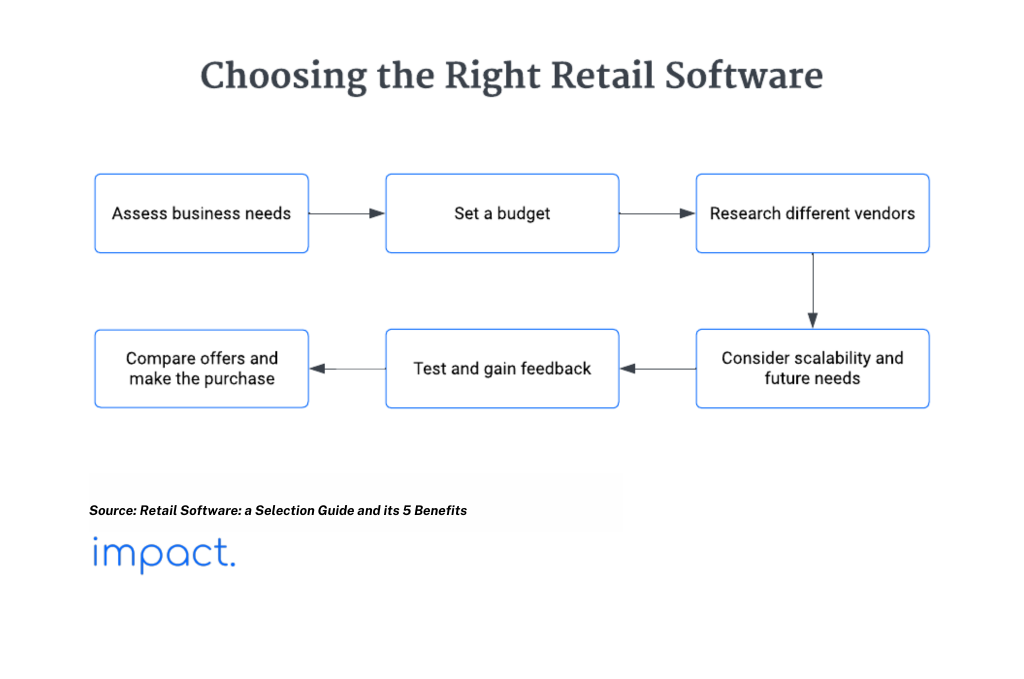
Understand what your store needs. Think about managing your stock, the capabilities of your checkout system, how you handle customer relationships, integrating online sales, and the kind of reports you need.
Create a list of must-have features. This list should support your daily operations and help you reach your business goals.
Set a specific budget for your retail software, including initial expenses and ongoing costs such as subscriptions and maintenance. Seek solutions that balance cost and features, ensuring the software meets your budget constraints.
Find software vendors that focus on businesses of your size and have a proven track record. Get recommendations and reviews from similar companies to ensure the vendor is reliable and meets your needs.
Examine both industry-specific and general-purpose software choices. Attend demonstrations and carefully review feedback to understand each option’s features and usability better.
When choosing retail software, prioritize its scalability to match your business growth. Opt for a solution that can adjust to your business size and changing needs.
Anticipate future needs such as launching new products, expanding multiple locations, or integrating emerging technologies. This foresight guarantees that your chosen software stays relevant as your business develops.
Before deciding, check out trial versions or demos provided by software vendors. Use the free trial period to thoroughly test the system and see if it works well with your business.
When introducing new software, start on a smaller scale for a smoother transition. Get feedback from key stakeholders, especially the employees who will be using the software every day. This process helps you assess user-friendliness and address concerns before going full-scale.
Evaluate pricing plans, contract terms, and extra services from different vendors. Negotiate if you can and carefully go through the terms and conditions.
When you’re happy with everything, make the purchase. Make sure you have access to good support, training resources, and updates to get the most out of your investment.
Effectively managing your customer base is crucial for a competitive edge and revenue growth in retail. If the task becomes overwhelming, consider integrating an ERP system to streamline all operational stages efficiently.
In the next chapter, we’ll delve into practical ways to boost your retail store’s visibility. Learn how to craft compelling messages, pinpoint your target customers, select the proper channels, and deploy intelligent promotional strategies to drive more business.
Ramsey, D., & Ramsey, J. (2010). The Everything Guide to starting and running a retail store: All you need to get started and succeed in your own retail adventure. Adams Media.
Impact Insight Team
Impact Insights Team is a group of professionals comprising individuals with expertise and experience in various aspects of business. Together, we are committed to providing in-depth insights and valuable understanding on a variety of business-related topics & industry trends to help companies achieve their goals.
See how our software provides better value.
Speak with our consultant to explore how we can improve your accounting, processes, and people.
